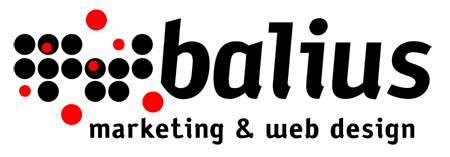“Personalization” has been a buzzword in marketing for a few years now. With the leaps and bounds AI technology is making, personalization is becoming easier and more impactful than ever. Here’s a look at how you can use personalization in marketing for your business.
1. Know Your Audience
Knowing your audience is Marketing 101. Without knowledge of your customers’ interests, challenges, and concerns, it’s difficult to build relationships with them so they are comfortable and confident buying from you. Once you understand your audience, it is easy to personalize how you market your products and services to them.
There are a few tools you can use to gather information about your customers before you create a marketing plan to reach them.
- Website Traffic Data. What pages of your website draw the most traffic?
- Social Media Engagement. What posts and topics resonate with your followers?
- Email Marketing Engagement. Who is opening your emails? What links do they click on?
- Purchase History. What products or services have individual customers purchased in the past?
- Customer Survey. What questions could you ask your customers directly to get to know them better?
AI has made gathering and analyzing this data easier than ever. It is likely that the marketing tools you already use employ AI and machine learning to organize and interpret your customer data for you. Meta Business Suite, Hootsuite, Constant Contact, MailChimp, HubSpot, and Salesforce are just a few examples of tools that provide customer insights, often using AI behind the scenes to do so.
2. Organize Your Audience
Now that you know your audience a bit better, you can organize them into groups based on common characteristics or behaviors. This is called segmentation. Many marketing tools, including the ones listed above, can automatically segment your audience based on these characteristics with no manual data entry required by you.
Segmentation helps you tailor the message of your marketing to your buyers. You can create segments based on all sorts of customer details, including demographics, geographic location, purchase history, and common interests. You can even create segments based on engagement level. For example, you could have a list of current customers, past customers, warm prospects, and new leads.
3. Personalization In Marketing
You know them, you’ve organized them. Now what?
Customize Your Email Campaigns
Data shows that recipients are more likely to open an email or click on a link if you use their name and other personal details in the emails you send to them. Merge tags make it easy to incorporate first names, company names, location, and other data into your subject lines and the body of your emails.
Customer segmentation is especially helpful (and easy!) in email marketing. Email marketing platforms allow you to segment your lists by a number of characteristics. Once you have set up your segments, you can create email campaigns targeting specific segments. Have a segment for past customers? Send them an email that welcomes them back with 10 percent off their next order. Need to warm up new leads? Create an email drip campaign that introduces your company, your team, and your products and services.
Personalize Your Social Media Marketing
From your daily posts to targeted advertising, social media marketing offers a huge opportunity to personalize content. Use data on your audience’s demographics and interests to create posts that will resonate with them. You can also use this data to create targeted ads that will grab your audience’s attention and make them want to click a link or otherwise interact with your content.
Employ Dynamic Content
Ever browsed an online store, left the webpage of a product you considered buying, then received an email from the brand urging you to take another look? That’s dynamic content. So are the product recommendations you see along the bottom of online stores or location-specific greetings you’ve received via email or push notifications on your phone. AI-driven dynamic content uses a customer’s behavior, preferences, or demographics to personalize content for them. It is a powerful tool for closing the sale or encouraging a shopper to consider additional products.
Our Final Thoughts
Personalization is a powerful marketing tool. With AI-powered marketing platforms, it is easier than ever to personalize your marketing content to reflect your audience’s interests, challenges, concerns, and other data points. Once you’ve started to personalize your content, take time to review the performance of your website, emails, and social media posts to continue to refine your message and reach more customers and prospects.
Personalization can help you reach your audience with relevant marketing experiences that drive better results for your company. For expert marketing strategy and support, get in touch with the marketing professionals at Balius today.


